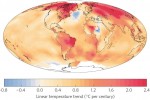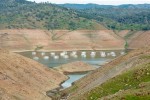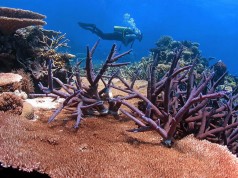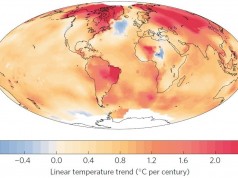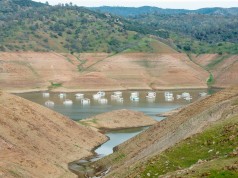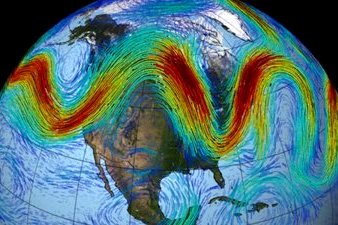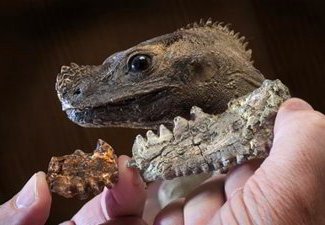
Berkeley – Why don’t plant-eating lizards like iguanas grow as large as meat-eating lizards, such as the humongous 10-foot-long, 150-pound Komodo dragons?
A recent discovery at the University of California, Berkeley, shows that at least some herbivorous lizards did grow that large during a warmer era 40 million years ago. The giant vegetarian lizard, identified from fossil jaw bones in UC Berkeley’s Museum of Paleontology, suggests that a warm climate helps these cold-blooded animals grow large, and that some reptiles may grow larger as global temperatures continue to rise.
“What’s cool is that this is an example of gigantism in herbivorous lizards, which tells us that if you’re a reptile and vegetarian, you have to have a warm environment,” said vertebrate paleontologist Patricia Holroyd of UC Berkeley’s Museum of Paleontology. “These guys were nearly six feet long and weighed about 60 pounds, bigger than the antelopes in the area.”
Museum scientists first collected the lizard jaw bone fossils from Burma (now Myanmar) in the 1970s, but reptile expert Howard Hutchison and former student Russ Ciochon, now at the University of Iowa, judged them unremarkable and stashed them in a drawer.
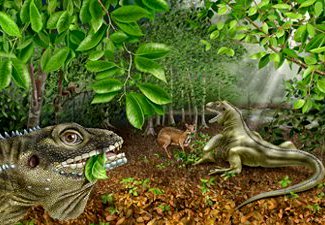
In the mid-1990s, however, Holroyd, Ciochon, and Gregg Gunnell of Duke University visited the National Museum of Myanmar, where they discovered and made casts of unusually large jaw bone specimens of the same animal. They invited vertebrate paleontologist Jason Head of the University of Nebraska, an expert on the evolution of body size, to take a look, and he immediately recognized them as giant members of a group of modern lizards that includes bearded dragons, chameleons and plant eaters like the spiny-tailed lizards.
Their description of the jaw bones and new lizard species – Barbaturex morrisoni, after the late singer Jim Morrison, often called the “Lizard King” – has been reported in the June 5 issue of the British journal Proceedings of the Royal Society B.
Because today’s largest lizards, like the carnivorous Komodo Dragon of Komodo Island, Japan, are found solely on mammal-free islands, scientists have suggested that lizards can grow large only in the absence of large mammals that compete with them or eat them. The new fossil find suggests that a warmer climate is also necessary for cold-blooded animals like lizards to grow large on a nutrient-poor leafy plant diet.
“We think the warm climate during that period of time allowed the evolution of a large body size and the ability of plant-eating lizards to successfully compete in mammal faunas,” Head said.
He noted that if global temperatures were to rise at a natural pace that preserves natural, healthy habitats, Earth could evolve giant lizards, turtles, snakes and crocodiles.
Check the following link to read/download the Full Study – “Giant Lizards Occupied Herbivorous Mammalian Ecospace during the Paleogene Greenhouse in Southeast Asia”:
http://rspb.royalsocietypublishing.org/content/280/1763/20130665.abstract
Source: University of California, Berkeley.



